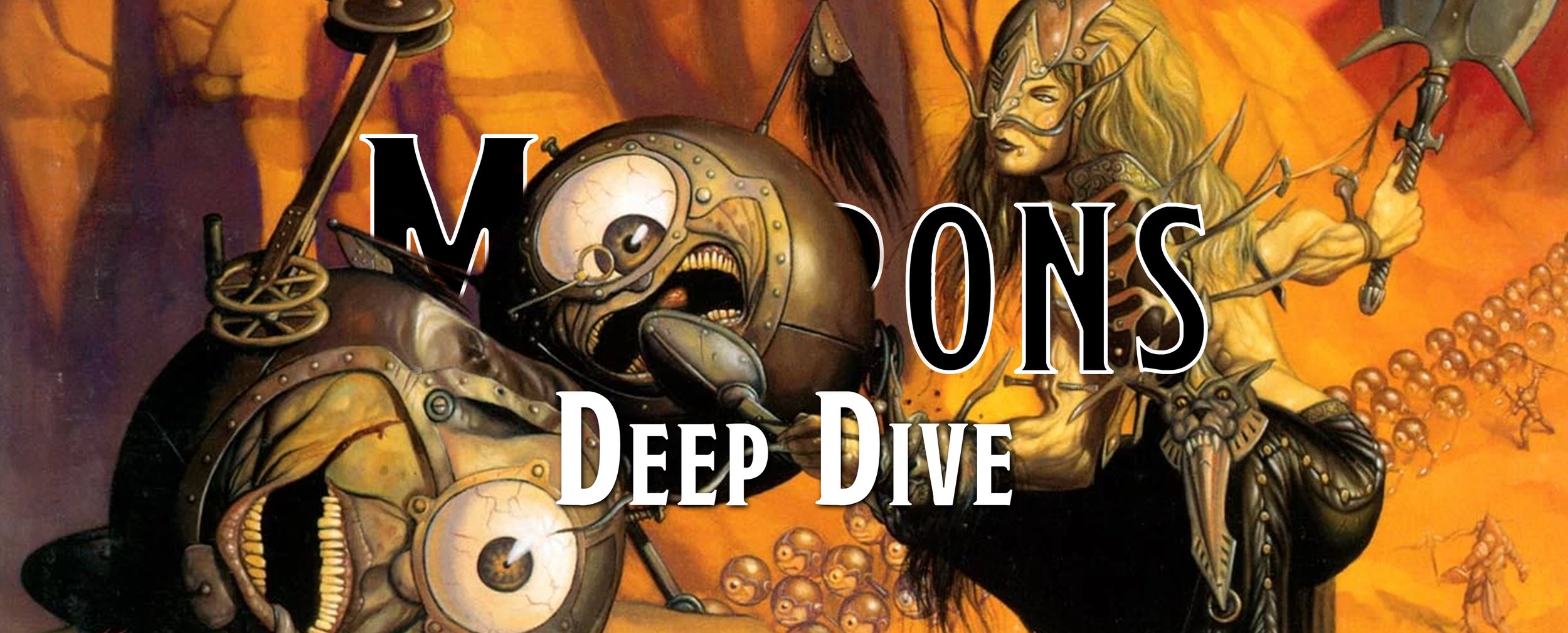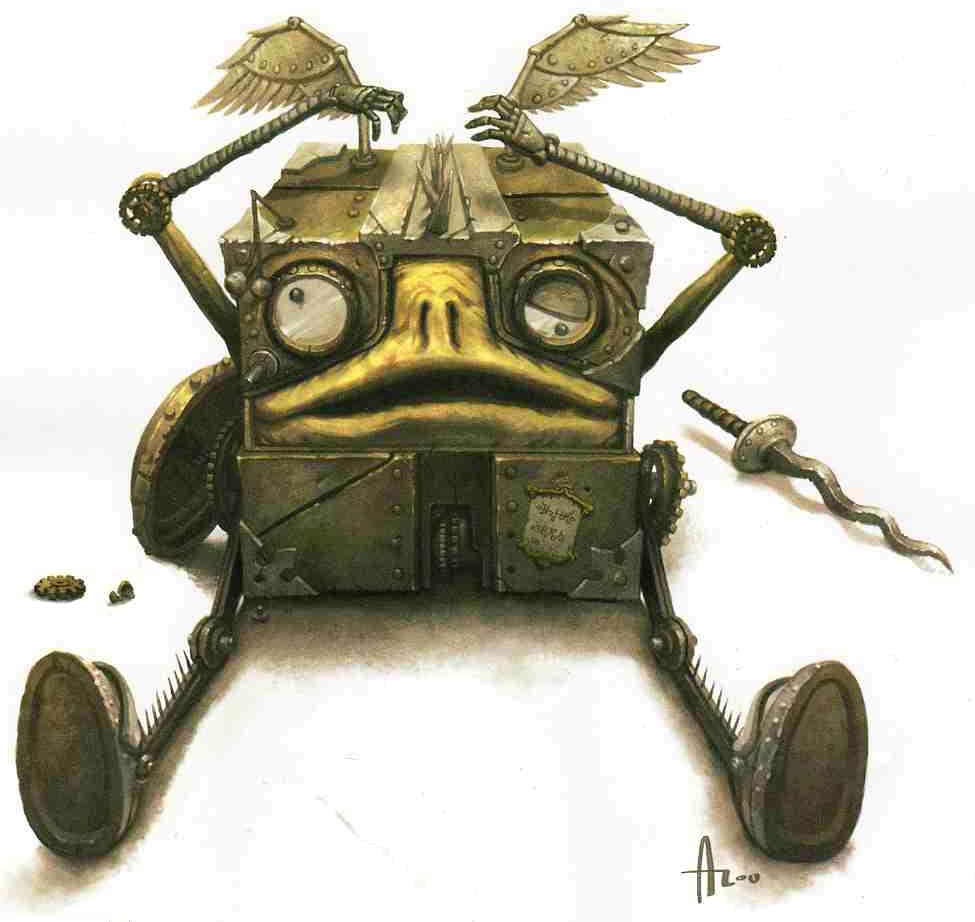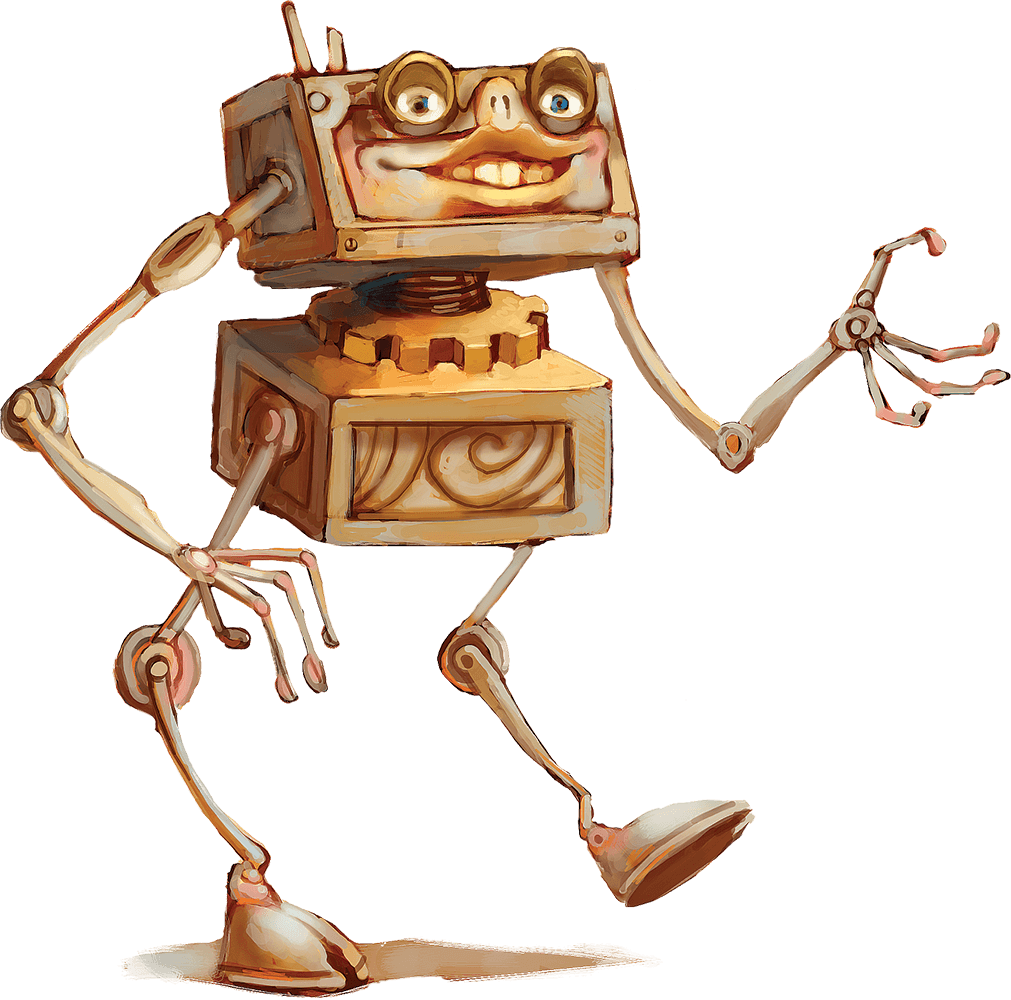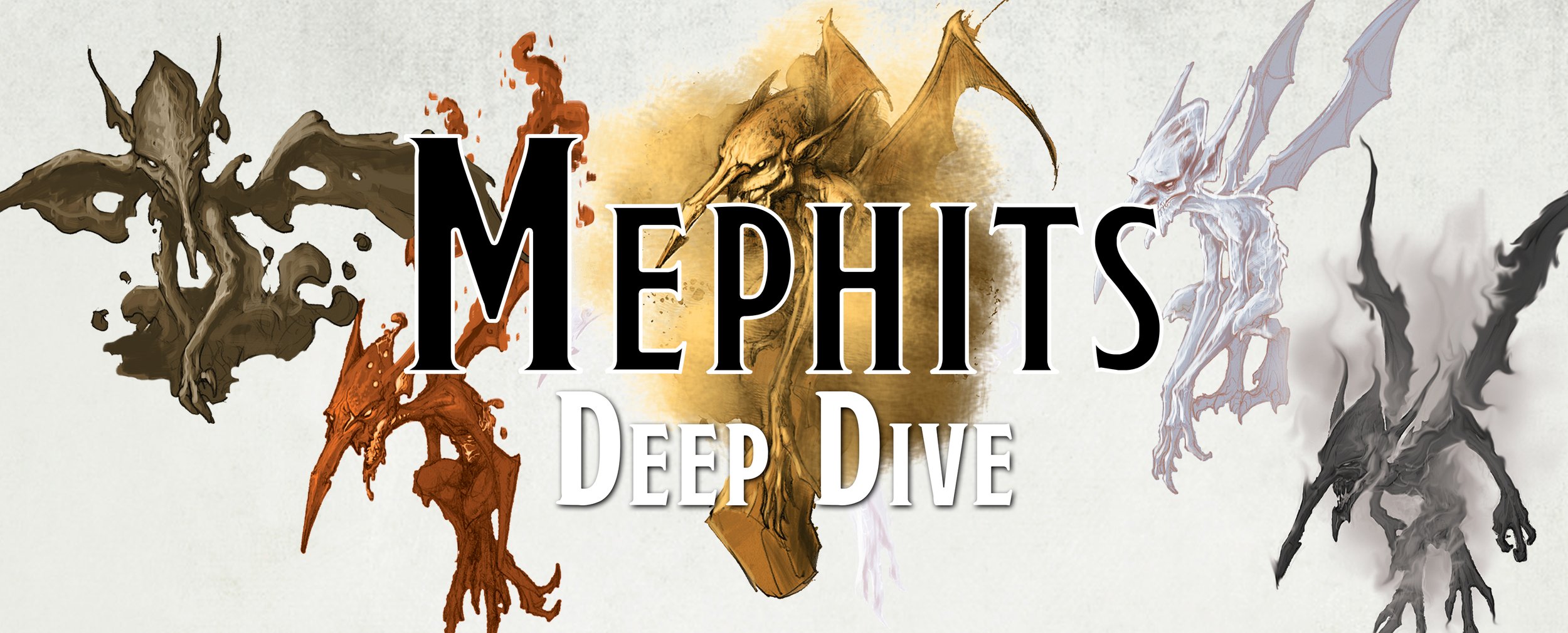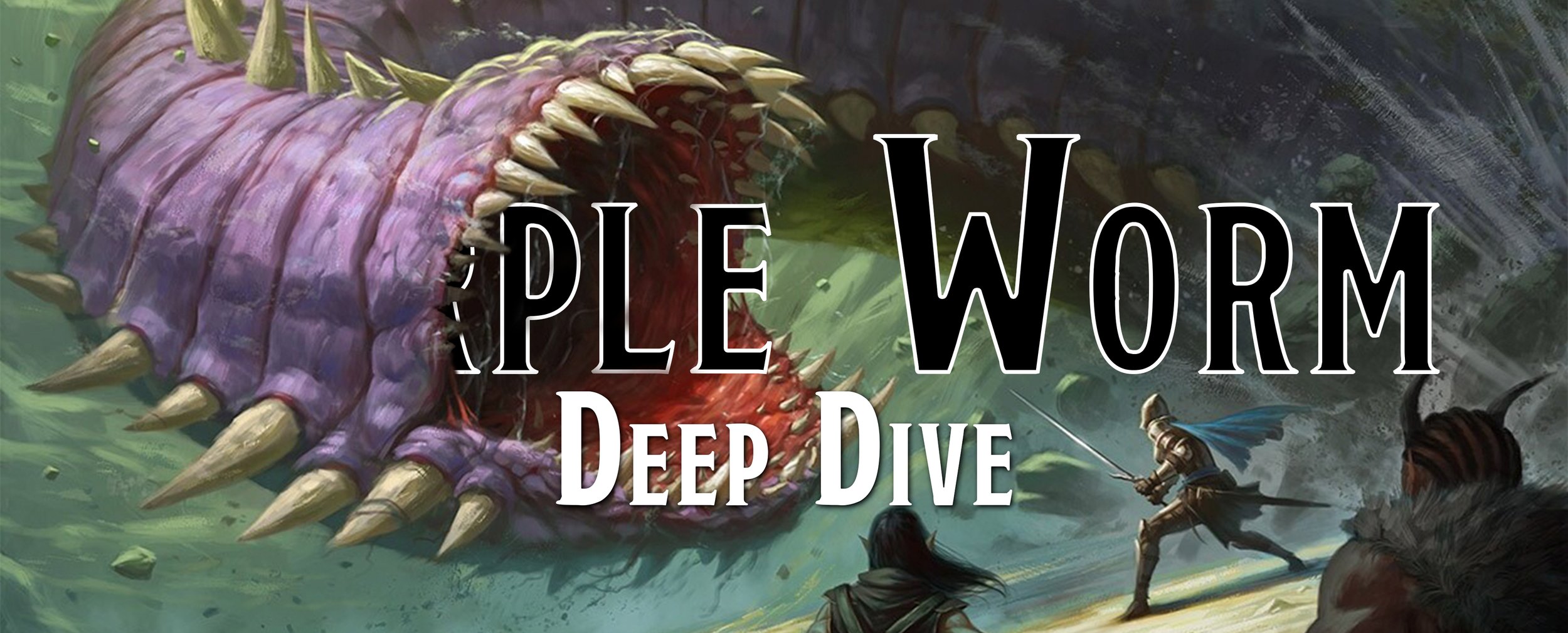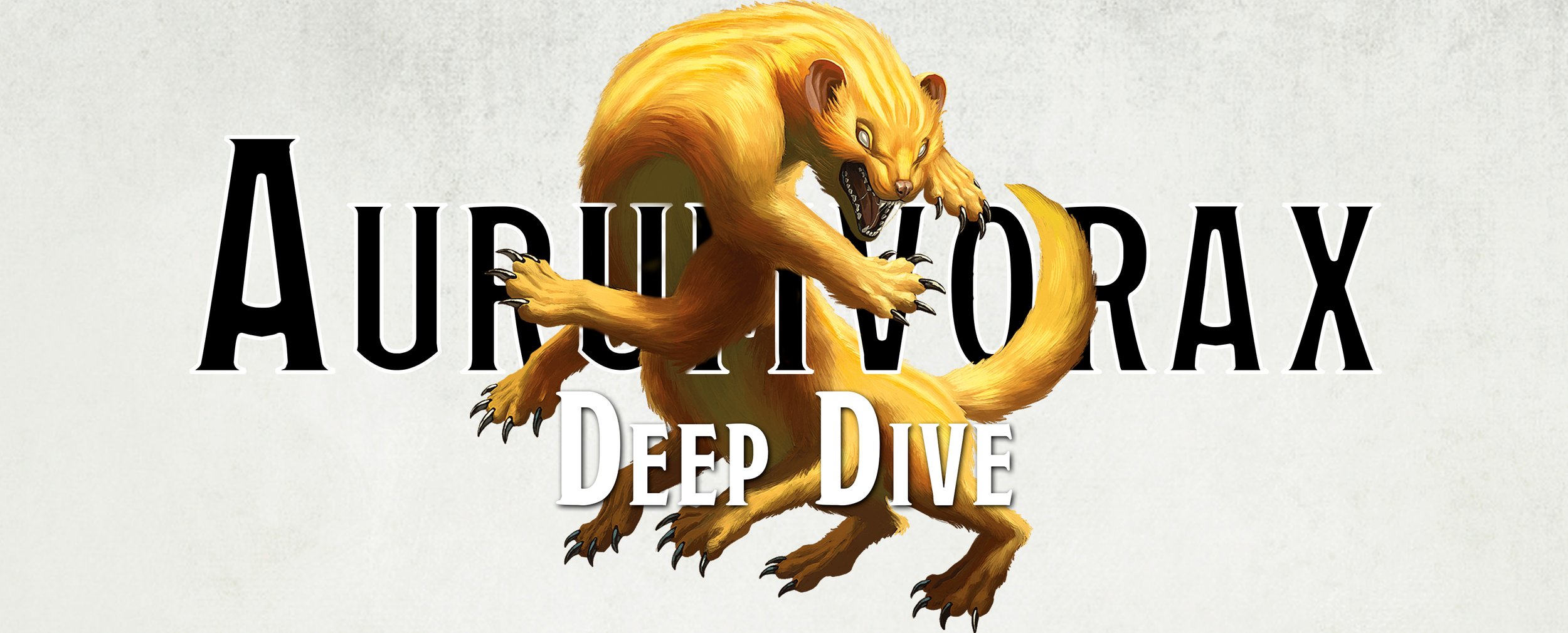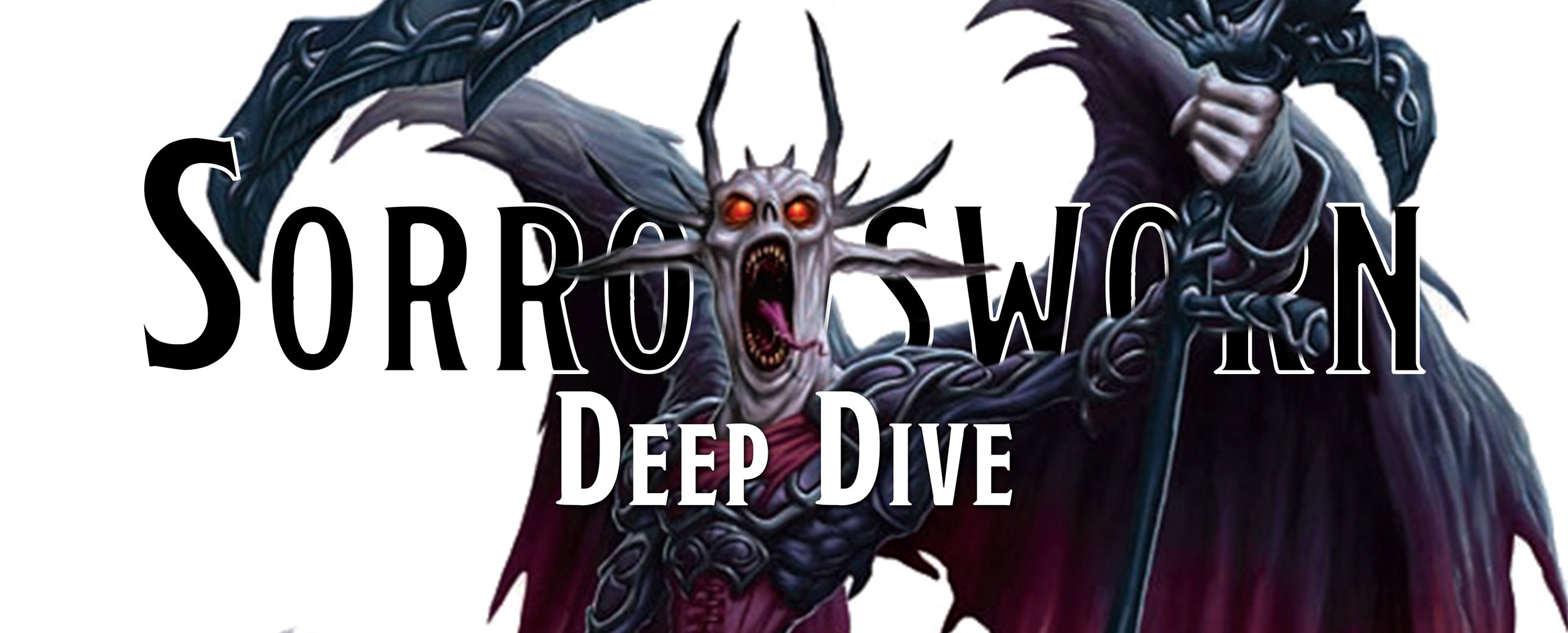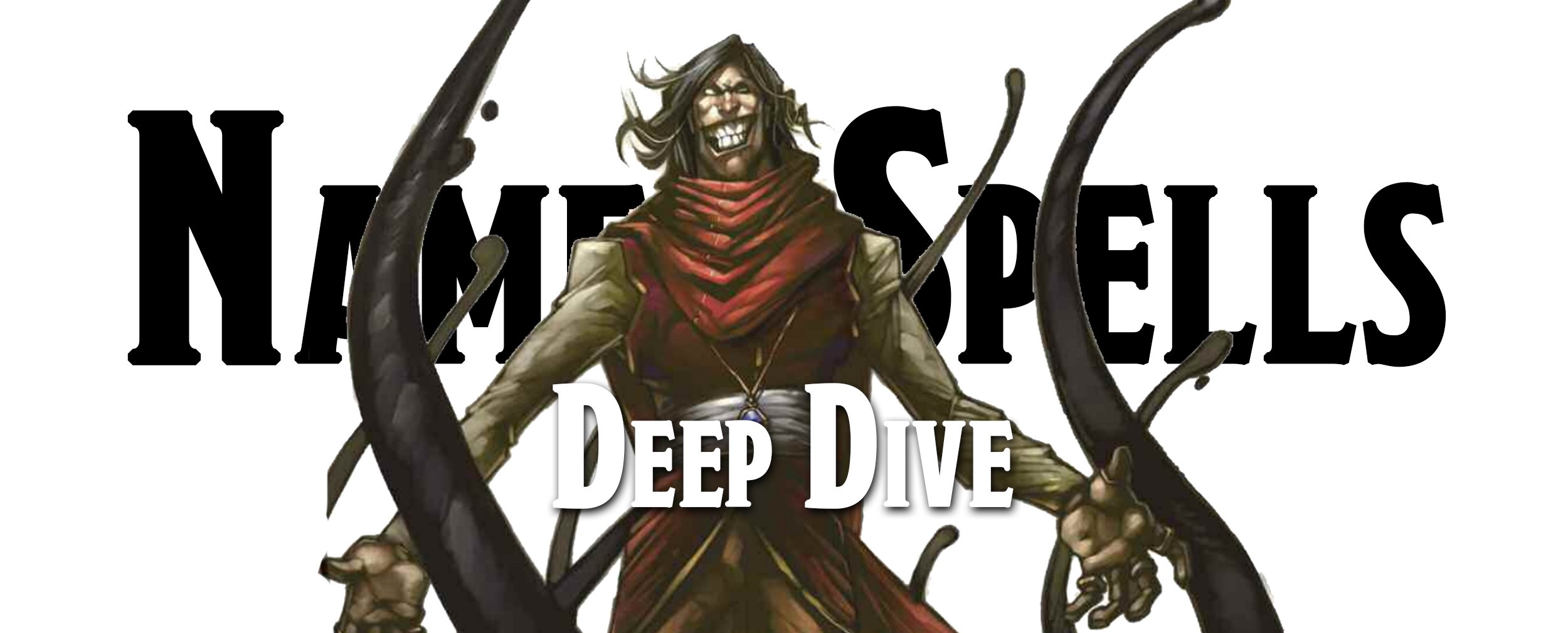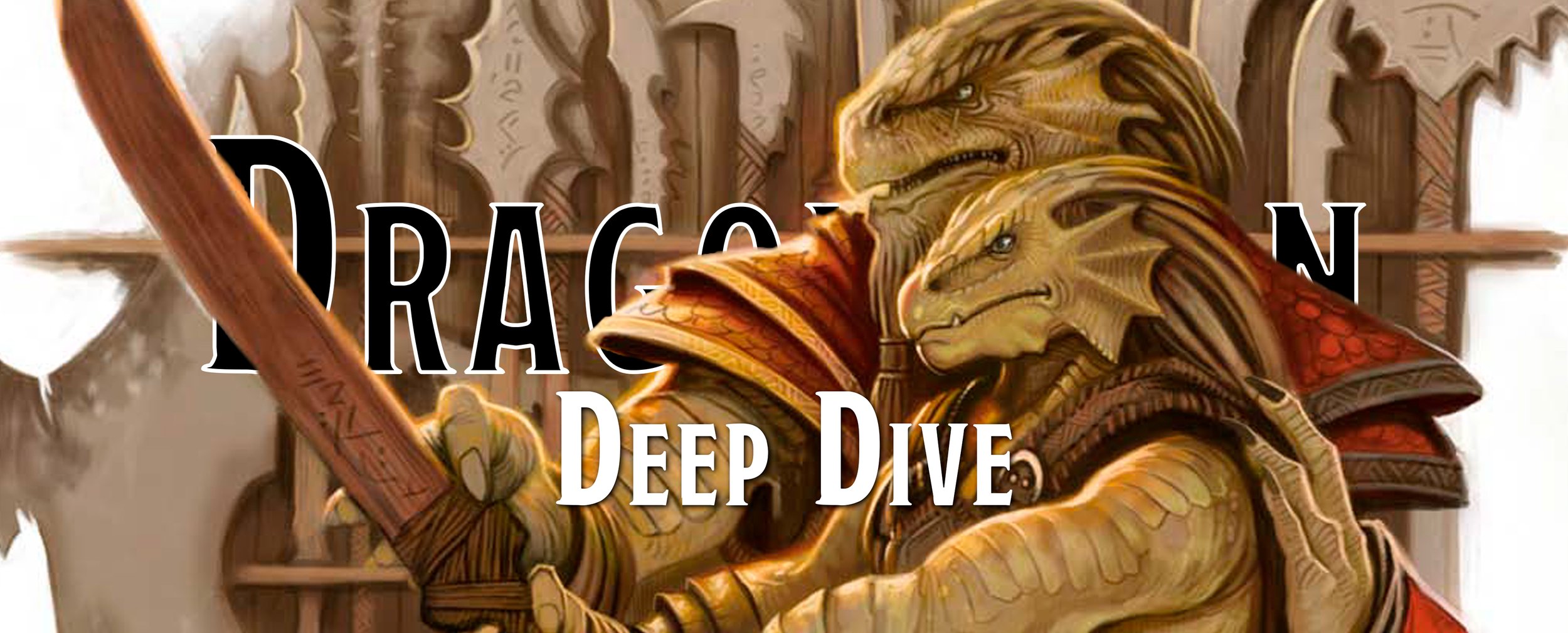Deep Dive - The Modron
Monodrone - Monster Manual 2, 1983 TSR Inc.
On the Plane of Nirvana, later known as Mechanus, reside the Modrons. There are so many to keep track of with fifteen different types and each has its own unique appearance and abilities. The one thing they all have in common is that they are forever connected in a strange hierarchy with Primus the One, the ruler of Mechanus, at the top.
1e - Monodrone (Base Modron)
Frequency: Common
No. Appearing: 12-144
Armor Class: 7
Move: 6”//6” or 6”/18” (MC:D)
Hit Dice: 1+1 or 1-1
% in Lair: Nil
Treasure Type: Nil
No. of Attacks: 1 or Nil
Damage/Attack: 1-4 or by weapon type
Special Attacks: Nil
Special Defenses: Immune to illusion or mind control
Magic Resistance: Standard
Intelligence: Semi-
Alignment: Lawful Neutral
Size: S (3’-6”)
Psionic Ability: Nil
Level/X.P. Value: II / 28+2/hp
Duodrone - Monster Manual 2, 1983 TSR Inc.
Modrons first appear in the Monster Manual II (1983) and are an immortal race of lawful neutral creatures with strict adherence to law and order, which must get tiring considering the universe is a sea of constant chaos. Everything a modron does is closely controlled, spelled out to the smallest detail. Laws are paramount in Modron society, and breaking even the tiniest rule or regulation will result in punishment. The Plane of Nirvana is about balance in everything, whether good and evil, light and darkness, or pie and cake. Ok, maybe not the last one since everyone knows pie is superior.
Tridrone - Monster Manual 2, 1983 TSR Inc.
When thinking of Nirvana, try to picture a giant wheel with no end. This wheel is divided into 64 equal parts, with the Tower of Primus at the hub. Here's where the fixed caste system in which all Modrons are assigned a rank can start to be seen. Each of the 64 sectors has a governor, which are the Octons. Four of those sectors together make a region, with each of these 16 regions ruled by a Quarton. Four regions make up a quarter, maintained by a Secundi, though all four of them answer to Primus the One. We will touch on what each Modron type is in just a little bit, we know it's quite a bit to grasp, but just know that the more powerful of a Modron you are, the greater intelligence and control over other Modrons that you have.
Quadrone - Monster Manual 2, 1983 TSR Inc.
All Modrons speak a complex language, that of absolute law and order that only lawful creatures can speak. If they are worried about you reading their lips, Modrons can talk telepathically. They are unaffected by illusions and magic that messes with one's mind, such as a charm monster spell. Fear spells have no effect, nor do any other spells that would affect their emotions, so you can forget about making them cry. All Modrons get a minor bonus when saving against cold, fire, and acid, and if you manage to hit with a fireball spell, they take less damage than you might expect. Finally, no life-draining effects hold any power over them since they laugh in the face of attacks from the Positive and Negative Planes.
Pentadrone - Monster Manual 2, 1983 TSR Inc.
Each Modron is ranked within their society. This caste system is ruled over the one and only Primus, the One. Primus even has his own tower named after him, the center city, known appropriately as the Tower of Primus. A Modron is either a Base Modron or a Hierarch Modron. There are more Base Modrons than Hierarch Modrons, and like in most societies, the minority rules the majority. The Base Mondrons are the common folk, acting as servants for the Hierarch Modrons. The Hierarchs run their society, running the government and acting as judge, jury, and in extreme cases, executioners.
There are fifteen different types of Modrons. The first five are Base Modrons, and the remaining ten are Hierarchs. Let's all take a deep breath as we jump in.
Decaton - Monster Manual 2, 1983 TSR Inc.
Nonaton - Monster Manual 2, 1983 TSR Inc.
Octon - Monster Manual 2, 1983 TSR Inc.
Monodrone. These round, one-eyed modrons are over 300 million strong, serving as general laborers capable of only doing one thing or as grunts in the various Nirvana armies.
Duodrone. They are blocky, rectangular, and extremely strong. The fifty million plus Duodrones can complete more complex tasks than their underlings and are the sergeants and corporals of Nirvana.
Tridrone. This is a pyramid-shaped Modron, complete with three legs and three arms. They are mid-level management, able to multitask while overseeing 144 Monodrones and Duodrones. In the army, they act as guards and special forces units.
Quadrone. There are 1.5 million of these cube-shaped Modrons with wings or an extra set of arms, but not both. They are upper management in the base Modron society, able to take on lots of complicated tasks at once or act as field officers during times of war.
Pentadrone. The last of the base Modrons, these bizarre starfish-looking creatures have five legs and a paralysis gas cannon mounted on their top. They act as a low-level police force, walking a beat on the mean, and very lawful, streets of Nirvana.
Decaton. The lowest level of Hierarch Modrons are responsible for the physical well-being of modron society. They appear with a spherical head with ten tentacles extending from the sphere and sit upon two stumpy elephant-like legs.
Nonaton. Police captains and detectives who are on the hunt for rogue Modrons, they look like a massive cylinder on three elephant-like legs and nine tentacles ending in claws attached to the cylinder-head.
Octon. They are upper-level management who are by-the-book sticklers for rules and regulations and are no fun at office parties. They appear kind of humanoid-like but have a large ‘collar’ that extends from their body that propels them with flight and exceptional swimming speeds with eight clawed tentacles extending from it.
Septon. A Septon is your regional manager. Acting as inspector generals, they maintain order throughout Modron society. They are like the Octon but have a ‘true’ head above the collar and only seven appendages with a more hand-like claw.
Hexton. Every army needs generals to lead them, and these folks are those generals. A Hexton appears closer to human-like though thick and bulky. They have a large head and a set of delicate fan-like wings on their back and two tentacles under each arm.
Quinton. Quintons are the record keepers. Considering the rules and regulations, there are, we know these Modrons must love paperwork. They appear similar to a Hexton but their wings are larger and their tentacle-appendages end in human hands.
Quarton. Rulers of the 16 regions, these creatures have four arms ending in four-fingered hands. They are powerful cleric and magic-user spellcasters.
Tertian. If you run afoul of the law, you'll find yourself in front of a Tertian. These nine Modrons are the judges for all offenses committed in Modron society. They look surprisingly human but with an extra large head and a tail that ends in a club that will stun you if you get hit by it.
Secundus. Viceroys who only answer to Primus. They have an oddly shaped head that looks like a space helmet. Their spellcasting ability is incredibly powerful and even fight like a 13th-level monk, capable of using a “quivering palm’ to really make a mortal creature fear for their life.
Primus (The One and the Prime). Primus is the ruler of all the planes of Nirvana. Primus makes the rules, and everyone else follows them. Make Primus angry by not following his statutes, and you'll end up in the energy pool. They are a huge being who relaxes in the energy pool that creates all Modrons and appears almost human, though parts of their body are obscured in inky darkness and rainbow bright clouds.
Septon - Monster Manual 2, 1983 TSR Inc.
There is one other pseudo-type of Modrons, the Rogue Modron. While Primus makes perfect Modrons, there's a tiny chance they can break bad. It mostly happens to base Mondrons, but even the occasional Hierarch Modron below Quarton will turn against all things law and order. However it happens, these Rogue Modrons break laws, spit in the face of their masters, and may even attack their fellow Modrons. They typically flee Nirvana as soon as possible so they aren’t immediately destroyed by the law-abiding, goody-two-shoes Modrons who hate chaos.
Hexton - Monster Manual 2, 1983 TSR Inc.
No matter what tier, a Modron isn’t very creative and doesn’t take the initiative very often. If they run into an issue or a task that confuses them, they head to the nearest supervisor for direction. If they don't know, they will find the next boss and ask them. This continues until someone knows the answer. It doesn't happen that often, but once every blue moon, an especially perplexing problem will go all the way to a Tertian, the third most senior member of the Modron race.
Being a Hierarch has its advantages. Not only do they get to lord over all the base Modrons, but they have some powerful spell-like abilities as well like teleport and wall of force. The Hierarchs can also travel to the Astral Plane and Ethereal Plane. But if they decide to head off to either location for vacation, or any other reason, they will need to ask Primus for time off and permission to do so - it's the law.
Quinton - Monster Manual 2, 1983 TSR Inc.
There are some drawbacks, however, to being one of the elite. Critical mass population numbers result in lower tier Modrons getting promoted, while Pentadrones have the population culled. The climb to the top is slow, but the fall is fast and deadly. Base Modrons killed anywhere in the known universe become part of Nirvana's energy pool, being reborn nine days later. On the other hand, Hierarchs are a little more in touch with their mortality. If a Hierarch dies in Nirvana, they head back to the energy pool and are reborn in nine days. If they die anywhere other than Nirvana, they head back to Primus directly and are never reborn.
Since their society is all about balance and order, lower Modrons are bumped up a tier to fill the empty slot above them, like a Pentadrone being promoted to a Decaton. It takes a day for the promotion to go through, during which the Modron changes into its new shape. A Modron can be tapped for promotion by any Modron of a higher level, though a Modron must’ve done something great to help stick out of the mass of Modrons, maybe by following rules way better than another one. Demotion is a bit more brutal as the downsized Modron is kicked back to the energy pool to be rebuilt later.
Quarton - Monster Manual 2, 1983 TSR Inc.
Being Primus doesn't mean you're exempt, for even the mighty One can be slain. When that happens, the four members of the tier below Primus set out to kill as many chaotic creatures as possible, and if they can find and slay someone responsible for killing Primus, they get a massive bonus to their score. The kills are tallied at the end of a week, and the winner becomes the new Primus.
Before we get into the individual Modrons, we'll need to talk about the Armies of Nirvana. They are tightly structured like everything else in the Modron world, with a strict leadership hierarchy. Nirvana is protected by thirty-six massive armies, and be prepared for a fight when you encounter one. Each region has its standing army, and each Secundi has two additional armies. Tertians have three armies to supplement their police force. These armies enforce the law and mete out punishment; one more reason soldiers should never be used as a police force. Primus has their own nine armies, one of which guards its tower and the other eight in any manner it sees fit.
Tertian - Monster Manual 2, 1983 TSR Inc.
Secundus - Monster Manual 2, 1983 TSR Inc.
Primus - Monster Manual 2, 1983 TSR Inc.
2e - Duodrone (Base Modron)
Frequency: Common
Organization: Hierarchy
Activity Cycle: Any
Diet: Special
Intelligence: Low
No. Appearing: 1d12
Armor Class: 6
Movement: 9, Fl 9 (E)
Hit Dice: 2+2
THAC0: 19
No. of Attacks: 2
Damage/Attack: 1d4+2 (x2), or weapon
Special Attacks: Nil
Magic Resistance: Nil
Size: S
XP Value: 175
Quadrone - Planescape Campaign Setting, 1994 TSR Inc.
It takes a while for our oddly shaped little friend to show up in the 2nd edition, but they finally pop up in the Planescape Campaign Setting - Monstrous Supplement (1994). We don't have time to go down the wonderful world of Planescape. All you need to know is that Nirvana is now known as Mechanus, or better yet, the Clockwork Nirvana of Mechanus, and Mechanus is where the Modron resides. Mechanus is all about order and balance, so there is a beautiful symmetry between the Plane and Modrons.
There are still fifteen of these oddly shaped constructs, with Primus being the leader of all Modron society. Most of the information on the perfection-seeking construct remains the same, with changes focusing around adapting them to the new rules. You shouldn't fear, though, as we are given more details and lore.
We start with an explanation of how the Modron views themselves as a society. It's nearly an impossible task for most creatures, as the Modron has no concept of individuality. Giving up this idea may be hard to comprehend, whether it's pride, ego, belief in a soul, or the ability to surrender oneself. Rumor is if that person is somehow able to achieve such a feat, they become a Modron.
Planescape Campaign Setting, 1994 TSR Inc.
What the Modron can process in the world around them also changes. A Modron's task set within the society on Mechanus has not changed. A Monodrone is still created for the sole purpose of doing a single job, while Primus is the leader for all Modrons, responsible for all Modrons and their actions. What has changed is that Modrons no longer know about any other types of Modrons except those directly above and below them in the hierarchy.
Here's one way to think about it. A Modron knows that its entire existence is to complete the tasks that come. Part of their responsibilities is to oversee the work being done by the tier directly below them so they know they exist. On the flip side, they follow the direction of those above them without question but will never have contact with a Modron above that tier. To this Modron, this higher one is the supreme leader of the universe. It's a limited view of the world, but one that maintains the strict hierarchy of their society, in turn, sustains the order their world is based on.
So what happens when a high-up Modron returns to the energy field that permeates Mechanus? A Modron from the lower level is instantly promoted to maintain its rigid set of numbers. Getting promoted is based on nothing more than being the nearest modron of the next lowest rank to whoever died. This process continues until we reach the lowest position, the Monodrone. There, a single Monodrone will split into two, each a fully complete entity. Apparently, it is only a painful process for those watching the promotion happening, as a Modron has no sense of self and what pain an individual might have.
The Great Modron March, 1997 TSR Inc.
A Modron can also leave Mechanus to be in the employ of a creature outside the confines of Mechanus. The reason it's infrequent is the request has to go through many ranks, and even then, it has a slim chance of being granted. Now you may be thinking, who would want a Modron working for them? We have to imagine they would make excellent accountants working with numbers. But librarians and bookkeepers also want these constructs in charge of maintaining their libraries. Just have to make sure your directions are clear and precise.
The article, The Plane Truth Part II: A Journey to the Outlands, Dragon #204 (Apr 1994), is the first mention of the Modron march across the Great Ring. It's a single paragraph, but an important one that leads to the adventure The Great Modron March (1997). Once every 289 years, the Modrons, for some unknown reason, leave Mechanus and do a walkabout around the Great Ring. Inhabitants are aware of this trek and know enough to stay out of the Modron's way, lest they get trampled by their relentless march. The book contains 11 adventures centering on the Modrons starting their march early, causing chaos and presenting a mystery that must be solved. Let's say the adventure involves Primus, a mysterious being known as Tenebrous, and a power struggle, without giving too much away.
Planeswalker Handbook, 1996 TSR Inc.
First found in the article Planar Heroes, from Dragon #235 (Nov 1996), and again in the Planeswalker Handbook (1996), we get information on how to play a rogue Modron. Becoming aware the universe isn't orderly and perfect, a Modron can grasp the concept of self and go rogue. This may happen if a Modron receives conflicting orders from a superior or if they just happen to be exposed to too much chaos. There are many hardships that a player Modron will encounter, so it's probably not for everyone, mostly due to the Modron hit squads sent after the rogue Modron to kill them and wipe their non-lawfulness from the multiverse.
3e/3.5e - Tridrone (Base Modron)
Medium Construct (extraplanar, lawful), always Lawful Neutral
Initiative: +1
Senses: all around vision, low-light vision, darkvision 60 ft.; Listen +3, Spot +10.
Languages: Modron, Common
Armor Class: 14, touch 11, flat flooted 13 (+1 Dex, +3 natural)
HP: 36 (3HD)
Immune Construct traits
Resist acid, cold, and fire resistance 10
Fort +1, Ref +2, Will +2
Speed 30 ft. (4 squares), climb 30 ft.
Melee 3 mwk shortspear +3 (1d6+2)
Ranged 3 mwk shortspear +2 (1d6+2)
Base Atk +2; Grp +4
Abilities Str 14, Dex 13, Con -, Int 10, Wis 12, Cha 10
Special Qualities coordinated ally, fixed initiative (2)
Skills Listen +3 Search +8, Spot +10, Survival +5
Advancement by character class
All-Around Vision (Ex) The sensory organs on all sides of a tridrone allow it to look in any direction, bestowing a +4 racial bonus on Spot and Search checks. Opponents gain no flanking bonuses when attacking a tridrone.
Monodrone - Manual of the Planes Web Enhancement, 2001 WotC
The Modron get the barest paragraph in the Manual of the Planes (2001) but are then saved as they become an exclusive web supplement in the Manual of the Planes Web Enhancement (2001). While we can’t help but feel as if they were wronged, at least the entire web supplement is about the Modrons. There is some saving grace because when you start reading through the text, you’ll see that there are bits and pieces of new information that breathe new life into the Modron. Though, most of it is just a copy and paste from the previous edition.
It’s theorized, wrongly in our opinion, that the Modron evolved from an intelligent insect of some sort, explaining the hive mind mentality. What type of insect is anyone’s guess, especially since you can argue that many of them look like alien-robot-bugs with malformed human faces. What fuels our potential insect descendants is that pool of energy in the center of Regulus, but now we know where it came from; the Modrons themselves!
Modron/Mechanus - Manual of the Planes, 2001 WotC
The Modron chain of command remains a strict hierarchical system. The twist in this edition is that Modrons don’t always have to run to their boss for answers. A Modron can act and react of its own volition. The caveat is they can only do so if the situation falls within the job they have been tasked for. It’s not so much independent thought or autonomy but increases productivity. Having to clear everything with your superior is guaranteed to slow down the process, and there’s a lot of chaos to deal with in the multiverse.
Rogue Quadrone - Dragon #354, April 2007 Paizo Publishing
The Rogue Modron issue hasn’t gone away either. Isolation, too many bosses, and increases in hit dice without advancing in rank are all ways a Modron can break bad. Quiet quitting isn’t something the Rogue Modron does, instead, they refuse to obey commands. What is frightening to the Modron society is that the Rogue Modron still has authority over those directly below them. In rare cases, a Rogue Modron will turn their employees into their own little army, leading them into a glorious battle against the rest of the compliant Modrons. None have ever been able to topple the former masters, it just has to be a pain in the butt to crush the mini-revolution, then replace all the Modrons that were corrupted and killed.
Quadrone - Dragon #354, April 2007 Paizo Publishing
Modrons get a second chance in this edition with the article Return of the Modrons by Ken Marable in Dragon #354 (Apr 2007). The author throws everything from the previous editions into this article, so there’s not much to discuss. The one thing that stands out is that the Rogue Modron can now plead their case not to be destroyed. A lucky few can survive the harsh sentencing and then be simply exiled and never return to Mechanus, which if you are going rogue, you probably don’t want to return anyways.
Though, this is really only for Quadrone Modrons or higher who have obtained the intelligence to know and understand what they have done. If you happen to be a player and want to play as a Modron, you can play an exiled Modron as they excitedly make their way across the multiverse. You get a bonus to your Constitution and Intelligence, but take a penalty to Dexterity and Charisma. In addition, you get the bonuses of being a living construct, you are surprised for much longer than your allies due to the conflict of free will and order, and you get some resistance to different elemental damages. All in all, it isn’t a bad trade-off to be an adorable walking cube.
Fiendish Modrons - Dragon #354, April 2007 Paizo Publishing
4e - Pentadrone Farstalker
Level 10 Skirmisher
Medium immortal animate, modron / XP 500
Initiative +12 / Senses Perception +7; Blindsight 10
HP 105; Bloodied 52
AC 24; Fortitude 22, Reflex 22, Will 22
Speed 7
All-Around Defense. The farstalker does not provoke opportunity attacks when it moves.
Implacable. An enemy cannot enter the farstalkers space by any means.
Steel Fist ✦ At-Will Attack: Melee 1 (one creature); +15 vs. AC. Hit: 2d10 + 7 damage.
Spinning Flurry of Blows ✦ At-Will Effect: The farstalker shifts up to its speed and can make the following attack at any point during this movement. Attack: Melee 1 (one creature); +13 vs. Reflex. Hit: 2d10 + 2 damage.
Psychosomatic Ether (charm, psychic) ✦ Encounter Attack: Close burst 2 (enemies in the burst); +13 vs. Will. Hit: 2d8 + 4 psychic damage, and the target is dazed and immobilized (save ends both).
Modron Shift ✦ Encounter Effect: The farstalker ends any slowing or immobilizing effect on it and shifts up to 5 squares, ignoring difficult terrain.
Str 21 (+10) Dex 20 (+10) Wis 14 (+17) Con 17 (+8) Int 14 (+7) Cha 14 (+7)
Alignment Unaligned / Languages Common
Quadrone - Dungeon #186, Jan. 2011 WotC
Modrons only appear in two articles in this edition with Creature Incarnations: Modrons by Greg Bilsland and Bruce Cordell in Dungeon #186 (Jan. 2011) and in Ecology of the Modron by Brian R. James in Dragon #414 (Aug. 2012). While we are sad that they don’t appear in any sourcebooks in this edition, we do have to admit that they probably got way more information written about them than if they had appeared in any of the Monster Manuals in this edition. Monster information in this edition is always pretty sparse.
In Creature Incarnations: Modrons we get a few stat blocks, only for the Monodrone, Duodrone, Quadrone, and a generic Modron Hierarch, as well as a bit of reworked lore. Modrons can now ‘assemble’ and ‘disassemble’ themself, either creating a more powerful Modron by combining their numbers or creating lots of lesser Modrons by falling apart into basic forms. The Modrons use this ability to assemble and disassemble strategically, forming into a single more powerful Modron against very powerful foes or disassembling into a large army when they have multiple objectives they must complete in a short time frame.
Going along with this new lore, Primus is said to be the originator of the Modrons and creates them by disassembling themselves, creating thousands of Modrons at a time. Primus then rebuilds their strength over the next cycle before releasing thousands of more Modrons onto the multiverse, slowly increasing their population. Perhaps the Modrons plan on taking over the multiverse by drowning it in Monodrones and order.
Ecology of the Modron takes the lore from above and begins to deepen it. A primordial, dubbed the Great Architect, wanted to turn the Elemental Chaos into a place of order, turning the churning chaos into the building blocks of life, helping to create the multiverse through order. Unfortunately, this somehow weakened the Elemental Chaos, and creatures from the Far Realm began leaking in. The Great Architect was then mortally wounded defending his creation and, using the energy of the Accordant Expanse - a place of pure law and order - the primordial transformed themselves into the countless Modrons that exist today.
Mechanus - Dragon #414, Aug. 2012, WotC
The first thing the Modrons did was establish their hierarchical system. Next, they closed off the Far Realm, sealing the remaining rifts. Once completed, the Modrons then headed to the Accordant Expanse. They built themselves a home, which we know as Mechanus. As time went by and the Modrons toiled away on their new home, they made a tower in the center of the sixty-four cogs they built, a memorial to the Great Architect. Inside the tower was a pool of pure energy and when the top four Modrons submerged themselves into it, the vestiges of the Great Architect emerged, the entity we know as Primus. After exactly 289 years, Mechanus was completed.
As a celebration of this monumental event, every 289 years the Modrons start their Great Modron March through the multiverse to document it all. Perhaps they are looking for weak points into the Far Realm, maybe they are seeking ways of destroying all chaos in the multiverse, or maybe they just want to go on vacation.
Next, we get an in-depth look at the physical qualities that make a Modron a Modron. We know Mondrons are living constructs comprised of mechanical parts and living tissue. They live off of an energy gel created by the Accordant Expanse which is just raw energy that gives them life and ensures that they have a reliance on the Accordant Expanse.
Looking at the physical form of the Modrons, you might wonder why some have so many eyes staring at you, judging you for your chaotic nature. The number of Modron eyes is determined by their rank, with some accentuating their eyesight with special goggles and others having psionic powers granting them blindsight. Modrons don't have ears, but use sensors, which give them hearing that most could only dream of. Sensors and nerves are infused into a Modron so they can feel, which includes pain, but they can suppress that feeling during combat. A select few have noses, but they rarely work and so most Modron lack any ability to smell things. While every Modron does feature a mouth, it is an odd choice since they don’t eat and few of them need to communicate verbally since they have telepathy - but that only functions while on Mechanus. We guess they still need to give out orders while on planes outside their home.
Modron March - Dragon #414, Aug. 2012, WotC
5e - Pentadrone (Base Modron)
Large construct, lawful neutral
Armor Class 16 (natural armor)
Hit Points 32 (5d10 + 5)
Speed 40 ft.
Str 15 (+2) Dex 14 (+2) Con 12 (+1) Int 10 (+0) Wis 10 (+0) Cha 13 (+1)
Skills Perception +4
Senses truesight 120 ft., Passive Perception 14
Languages Mondron
Challenge 2 (450 XP) / Proficiency Bonus +2
Axiomatic Mind. The pentadrone can’t be compelled to act in a manner contrary to its nature or its instructions.
Disintegration. If the pentadrone dies, its body disintegrates into dust, leaving behind its weapons and anything else it was carrying.
Multiattack. The pentadrone makes five arm attacks.
Arm. Melee Weapon Attack: +4 to hit, reach 5 ft., one target. Hit: 5 (1d6 + 2) bludgeoning damage.
Paralysis Gas (Recharge 5–6). The pentadrone exhales a 30-foot cone of gas. Each creature in that area must succeed on a DC 11 Constitution saving throw or be paralyzed for 1 minute. A creature can repeat the saving throw at the end of each of its turns, ending the effect on itself on a success.
Monodrone - Monster Manual, 2014 WotC
The Modrons return to the Monster Manual (2014) with just a few stat blocks and a bit of lore that links them back to the original editions. There isn’t anything new or too exciting here. They are ultimate believers in law and their hierarchy is strict and unwavering. Primus still rules over them, capable of commanding the vast Modron armies to follow its orders to the exact letter.
All Modrons are immune to being compelled to act in a manner contrary to their nature or their instructions, which means they aren’t technically immune to being charmed or frightened. So you can charm these creatures, but you better word any suggestion spells very carefully or else it just won’t work on them. In addition, they all have truesight which is a powerful sense that allows them to see through magical darkness, see invisible creatures, and through visual illusions. They can even now see the true forms of shapechangers and creatures transformed by magic, like through a polymorph spell, and even gaze into the Ethereal Plane. This is a much better sense than they did have where they could only see through illusions - not everything magical.
Duodrone - Monster Manual, 2014 WotC
If you have to fight Modrons, maybe because you are a wild magic sorcerer and the Modrons are not going to stand for your existence, then be prepared to get hit a lot. Each Modron can attack a number of times based on their position, with Monodrones only getting a single hit in there while a Pentadrone can strike you five times. We aren't given stat blocks for any of the Hierarch Modrons, but we can only assume that Primus would hit you fifteen times over and over until you denounce all that horrific chaos in your heart.
Quadrone - Monster Manual, 2014 WotC
If you destroy a Modron, and hope to gather up its corpse for your weird experiments, you’ll be disappointed when it dies and disintegrates into dust. Luckily, it leaves behind any equipment it is wearing, which is most likely just a few common weapons it had previously been hitting you with. If you are in a big fight with several different types of Modron and kill their leader, you didn’t cut the head off the snake as it were, instead a blinding flash will happen and the Modrons will get an immediate new commander who immediately takes command with no hesitation or day of trying to figure out their new body. They are just ready to destroy you for the chaotic energies that you give off.
Tridrone - Monster Manual, 2014 WotC
Pentadrone - Monster Manual, 2014 WotC
Modron March - Dungeon Master’s Guide, 2014 WotC
In the end, we are happy the Modrons survived the editions, enjoying a renaissance of sorts that should continue with the upcoming release of the Planescape setting. It seemed like people never quite knew what to do with all these constructs, and there are a lot of them, but understood how cool they were. We can only hope that they get another big adventure where they go on their next Great Modron March and we explore the multiverse again with them.

